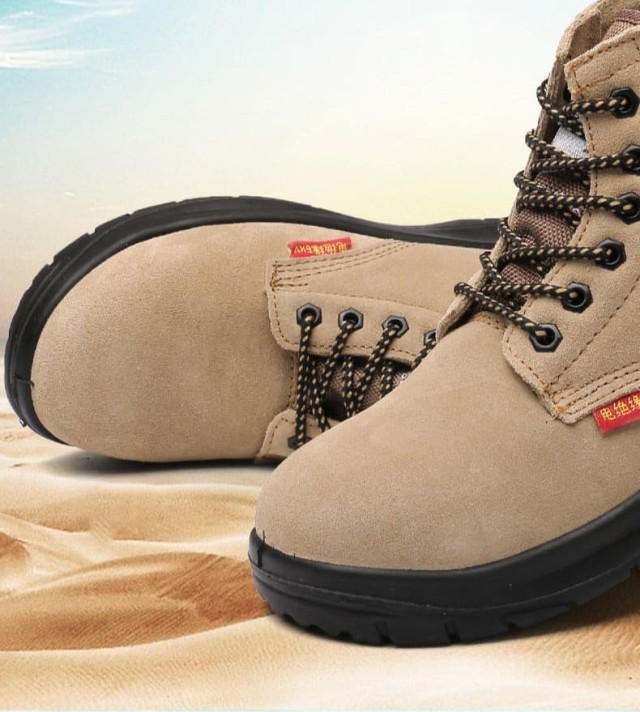Modern workplaces demand advanced protective solutions that address multiple hazards without compromising comfort. Composite toe footwear has emerged as a versatile safety solution, offering superior protection in environments where traditional steel toes fall short—from electrical hazard zones to metal-sensitive worksites.
Safety-Critical Environments Demanding Composite Toes
Metal Detection Workplaces: Beyond Airport Security
Composite toes, made from non-metallic materials like carbon fiber or Kevlar®, eliminate the nuisance of triggering metal detectors. This makes them ideal for:
- Correctional facilities: Staff avoid repeated security checks.
- Aerospace manufacturing: Workers navigate sensitive equipment without downtime.
- Pharmaceutical labs: Prevents contamination risks from metal particles.
Electrical Hazard Zones: Dielectric Properties Explained
Unlike conductive steel, composite materials inherently resist electricity, meeting OSHA’s EH (Electrical Hazard) standards. Key applications include:
- Utility workers: Dielectric soles and toes prevent shocks from live circuits.
- Renewable energy technicians: Safeguards against lightning strikes during solar/wind farm maintenance.
- Industrial electricians: Reduces risks in high-voltage environments.
Research shows EH-rated composite toe shoes must withstand at least 18,000 volts under dry conditions, per ASTM F2413 testing.
Composite vs. Traditional Materials: Technical Breakdown
Conductivity Comparison: Steel vs. Carbon Fiber
| Property | Steel Toe | Composite Toe |
|---|---|---|
| Electrical Conductivity | High (Risk of Shock) | None (EH-Compliant) |
| Weight per Pair | ~4.5 lbs | ~3.2 lbs |
| Metal Detection | Triggers Alarms | Undetectable |
Thermal Resistance in Extreme Temperatures
Composite materials excel in:
- Freezing conditions: Unlike steel, they don’t conduct cold to the feet.
- High-heat settings: Won’t overheat near furnaces or welding sparks.
Limitation: Composite toes typically withstand impacts up to 75 lbf (vs. steel’s 100+ lbf), making them unsuitable for heavy industrial crushing risks.
Certifications and Compliance
OSHA Standards for Electrical Hazard Footwear
EH-rated shoes must:
- Resist electrical currents up to 600V in dry conditions (per ASTM F2413).
- Dissipate static electricity (10–100 megaohms resistance).
ASTM F2413 Testing Protocols
Composite toe caps undergo rigorous evaluations for:
- Impact resistance (30–75 lbf force).
- Compression resistance (minimum 1,000 lbs).
- Puncture resistance (270+ lbs of force).
Emerging Industrial Applications
Chemical Processing: Corrosion Resistance
Composite materials resist acids, solvents, and oils—common in:
- Oil refineries
- Wastewater treatment plants
Renewable Energy Installations: Lightning Risk Mitigation
Wind turbine technicians benefit from:
- Non-conductive toe caps during storms.
- Lightweight designs for climbing tall structures.
Upgrade Your Safety Standards with 3515
For distributors and bulk buyers seeking reliable, certified composite toe footwear, 3515 delivers scalable production of safety shoes tailored to your industry’s hazards. Our expertise ensures compliance without compromising mobility or comfort.
Explore 3515’s range today—engineered to protect where traditional materials can’t.
Related Products
- Custom Wholesale Leather Safety Boots Direct Factory Manufacturing
- Wholesale Leather Safety Boots with Customizable Protective Toe
- Durable High-Traction Canvas Sneakers Wholesale & Custom Manufacturing
- Durable Mid-Cut Tactical Boots for Wholesale & Private Label
- Customizable Anti-Smash Safety Boots for Wholesale & Private Label Manufacturing
Related Articles
- How Safety Work Boots Engineer Protection: Features and Standards for Targeted Hazard Mitigation
- How to Prevent Foot Injuries from Steel Toe Boots Without Sacrificing Safety
- How to Choose Between Steel and Composite Toe Boots for Maximum Safety
- Matching Men’s Work Shoe Safety Technologies to Workplace Hazards
- How to Choose Steel Toe Boots: Safety, Comfort, and Job-Specific Features



















